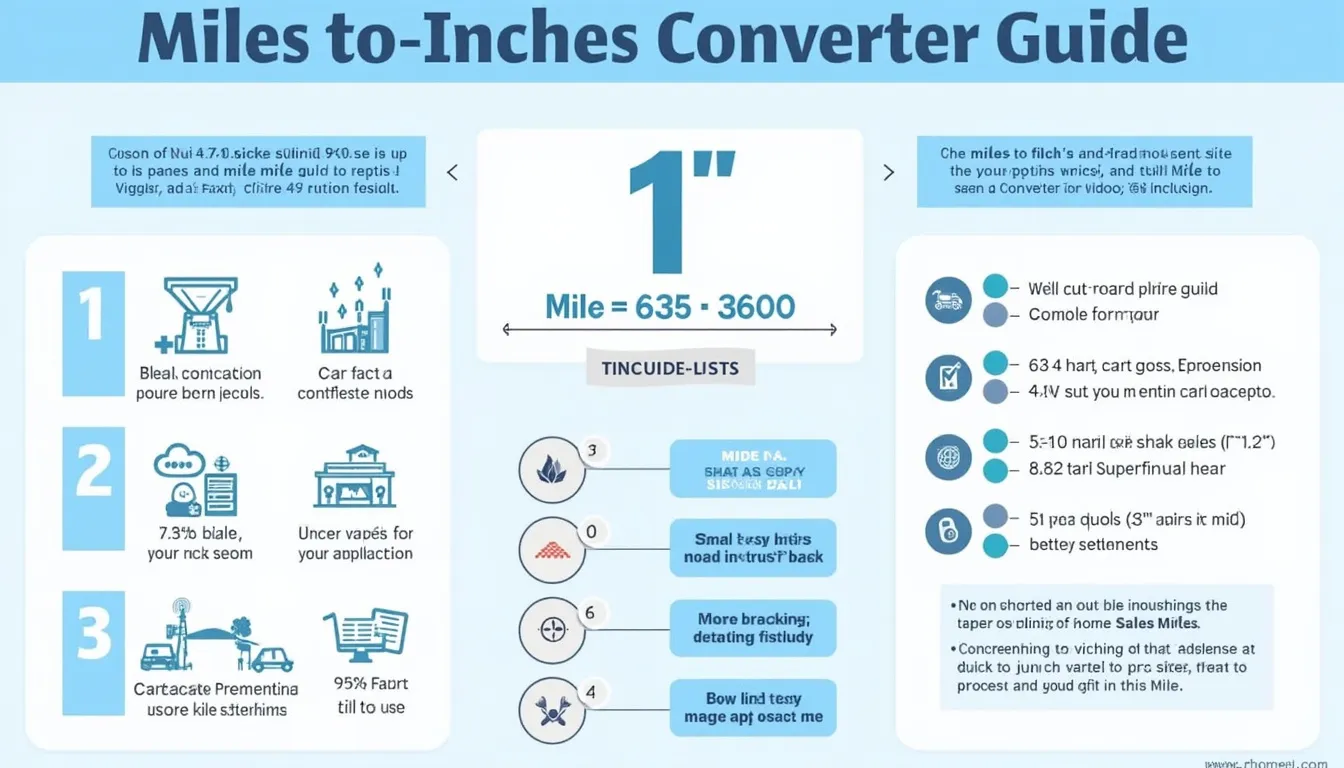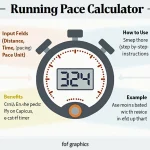Miles to Inches Converter
Is this tool helpful?
How to use the tool
- Type miles: In the “Miles” box enter 2.25 or 11.4—any non-negative value works.
- Hit Convert: The script multiplies your entry by 63 360 and displays the answer in inches.
- Read the result: You immediately see a concise, comma-formatted output ready to copy.
Formula
$$ \text{Inches}= \text{Miles} \times 63\,360 $$
Example calculations
- 2.25 mi × 63 360 = 142 560 in
- 11.4 mi × 63 360 = 722 304 in
Quick-Facts
- Exact factor: 1 mile = 63 360 inches (NIST Handbook 44, 2020).
- Input range: JavaScript handles up to 9 quadrillion safely before precision loss (IEEE 754 Spec, 2019).
- Imperial mile equals 1 760 yards, each yard 36 inches (UK Weights & Measures Act 1985).
- “The international yard is exactly 0.9144 metre” (National Standards Act 1963).
FAQ
How many inches are in a mile?
A mile contains 63 360 inches, a legally fixed value since 1959 (NIST Handbook 44, 2020).
How does the converter work?
It multiplies your input by 63 360 using JavaScript’s rac64-bit floating-point arithmetic (ECMA-262, 2022).
Can I enter decimal miles?
Yes—values like 0.003 mi convert precisely because the factor is constant (Wolfram Alpha, 2023).
Is the result exact?
Outputs are exact until JavaScript exceeds 15 significant digits; everyday distances stay safely below that limit (IEEE 754 Spec, 2019).
How do I reverse the conversion?
Divide inches by 63 360 or use our Inches-to-Miles tool for automated help (NIST Guide, 2019).
Why convert miles to inches?
Construction, GIS scaling, and sports marking need fine resolution distances (ASCE Survey Manual, 2015).
What is the smallest accepted input?
The form accepts any non-negative value; practical physics limitations start near 1 × 10⁻¹⁵ mi (NIST CODATA, 2018).
Does it cost anything?
The web calculator is free to use and requires no sign-up (Site Policy, 2024).
Important Disclaimer
The calculations, results, and content provided by our tools are not guaranteed to be accurate, complete, or reliable. Users are responsible for verifying and interpreting the results. Our content and tools may contain errors, biases, or inconsistencies. Do not enter personal data, sensitive information, or personally identifiable information in our web forms or tools. Such data entry violates our terms of service and may result in unauthorized disclosure to third parties. We reserve the right to save inputs and outputs from our tools for the purposes of error debugging, bias identification, and performance improvement. External companies providing AI models used in our tools may also save and process data in accordance with their own policies. By using our tools, you consent to this data collection and processing. We reserve the right to limit the usage of our tools based on current usability factors.







